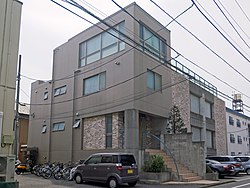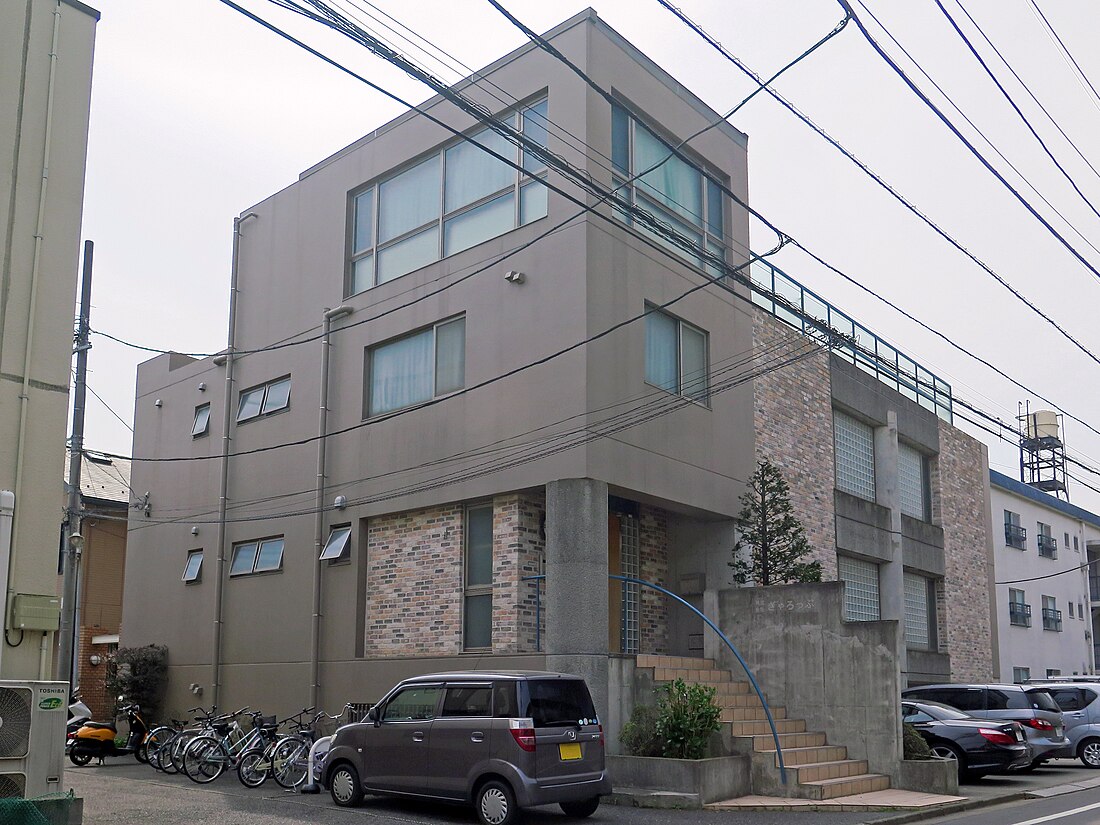Gallop (studio)
Japanese animation studio From Wikipedia, the free encyclopedia
Gallop Co., Ltd. (株式会社ぎゃろっぷ, Kabushiki Kaisha Gyaroppu), sometimes credited as Studio Gallop (スタジオぎゃろっぷ, Sutajio Gyaroppu), is a Japanese animation studio founded on December 13, 1978,[1] by former Mushi Pro members.[citation needed]
 | |
 Gallop Co., Ltd. headquarters in Nerima, Tokyo, Japan | |
Native name | 株式会社ぎゃろっぷ |
|---|---|
Romanized name | Kabushiki Kaisha Gyaroppu |
| Company type | Kabushiki gaisha |
| Industry | Anime production and planning |
| Predecessor | Studio Gallop Y.K. |
| Founded | December 13, 1978 |
| Headquarters | |
Area served | Japan |
Key people | Akio Wakana (representative director) |
| Subsidiaries | Dong Woo Animation |
| Website | www.anime-gallop.co.jp |
Works
TV series
1980s
- Touch (1985–1987) (production assistance; animated by Group TAC)[2]
- High School! Kimengumi (1985–1987) (production assistance; animated by Studio Comet)[3]
- The Three Musketeers Anime (1987–1989) (animation cooperation with Sei Young Animation)[4]
- Kiteretsu Daihyakka (1988–1996)[5]
- Gaki Deka (1989–1990)[6]
- Miracle Giants Dome-kun (1989–1990)[7]
1990s
- Tanken Goblin Tou (1990–1991)[8]
- RPG Densetsu Hepoi (1990–1991)[9]
- Genji Tsūshin Agedama (1991–1992)[10]
- Chikyū SOS Soreike Kororin (1992–1993)[11]
- Hime-chan's Ribbon (1992–1993)[12]
- Akazukin Chacha (1994–1995)[13]
- Nurse Angel Ririka SOS (1995–1996)[14]
- Rurouni Kenshin (1996–1997) (first 66 episodes;[15] later animated by Studio Deen)[16]
- Kodocha (1996–1998)[17]
- Kochira Katsushika-ku Kameari Kōen-mae Hashutsujo (regular broadcast: 1996–2004;[18] special broadcast: 2005–2008;[19][20] last special episode: 2016)[21][22]
- Anime television de Hakken! Tamagotchi (1997–1998)[15]
- Initial D: First Stage (1998) (animation cooperation with Studio Comet)[23]
- Ojarumaru (1998–present)[24]
2000s
- Transformers: Car Robots (2000)[25]
- Yu-Gi-Oh! Duel Monsters (2000–2004)[26]
- Forza Hidemaru (2002)[27]
- Legendz Yomigaeru Ryūō Densetsu (2004–2005)[28]
- Morizo to Kikkoro (2004–2005)[29][30]
- Yu-Gi-Oh! GX (2004–2008)[31]
- Animal Yokocho (2005–2006)[32]
- Eyeshield 21 (2005–2008)[33]
- Hataraki Man (2006)[34]
- Yu-Gi-Oh! 5D's (2008–2011)[35]
- Mainichi Kaasan (2009–2011, first 96 episodes; later animated by TYO Animations)[36]
2010s
- Yu-Gi-Oh! Zexal (2011–2014)[37][38]
- Yu-Gi-Oh! Arc-V (2014–2017)[39]
- Yu-Gi-Oh! VRAINS (2017–2019)[40]
- Bakutsuri Bar Hunter (2018–2019) (animation cooperation with Toei Animation)[41]
2020s
- Fushigi Dagashiya Zenitendō (2022–present) (animation cooperation with Toei Animation; episode 53 onwards)[42][43]
- Me & Roboco (2022–2023)[44]
- Kagaku Manga Survival (2024)[45]
Original video animations
- Prefectural Earth Defense Force (1986)[46]
- Mugen Shinshi Bōken Katsugeki-hen (1987)[46][47]
- Maps: Densetsu no Samayoeru Seijintachi (1987)[48]
- TWD Express: Rolling Takeoff (1987)
- To-y (1987)[49]
- One Pound Gospel (1988)[46]
- Fujiko F. Fujio no SF Tanpen Theater (1990–1991) (episodes 1–2, 5–6, 9–10)
Films
- The Three Musketeers Anime: Aramis' Adventure (1989)[50]
- Rurouni Kenshin: The Motion Picture (1997)[51]
- Kochira Katsushika-ku Kameari Kōen-mae Hashutsujo the Movie (1999)[15]
- Kochira Katsushika-ku Kameari Kōen-mae Hashutsujo the Movie 2: UFO Shūrai! Tornado Daisakusen!! (2003)[52]
- Yu-Gi-Oh! The Movie: Pyramid of Light (2004)[53]
- Kawa no Hikari (2009)[54]
- Yu-Gi-Oh!: Bonds Beyond Time (2010)[55]
- Yu-Gi-Oh!: The Dark Side of Dimensions (2016)[56]
- Survive! Inside the Human Body (2020) (animation cooperation with Toei Animation)[57]
- Shinkai no Survival! (2021) (animation cooperation with Toei Animation)[58]
References
External links
Wikiwand - on
Seamless Wikipedia browsing. On steroids.
